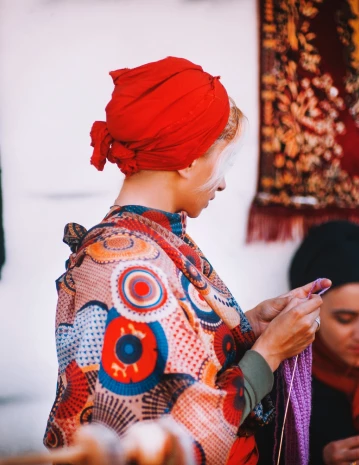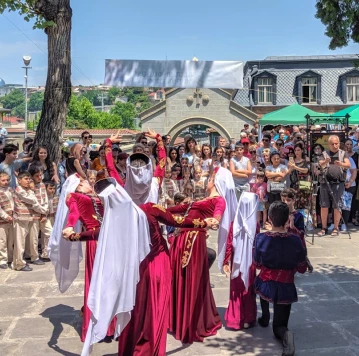Cultural Hotspots in Georgia refer to places in the country that are known for their cultural and historical significance. These hotspots are a major attraction for tourists from all over the world. Georgia has a rich cultural heritage that is reflected in its art, architecture, music, dance, and cuisine. Whether you are interested in history, art, music, or food, there is something for everyone to enjoy in Georgia’s cultural hotspots.

Overview of Cultural Hotspots
Georgia is known for its rich cultural heritage, and there are many cultural hotspots that visitors can explore. Some of the most significant cultural hotspots in Georgia include Tbilisi, the capital city with its old town, museums, and theaters; Mtskheta, the ancient capital of Georgia and a UNESCO World Heritage site; the cave city of Uplistsikhe, dating back to the Iron Age; and the wine region of Kakheti, where visitors can explore traditional wineries and taste local wines. Other cultural hotspots include the ski resort town of Gudauri, the spa town of Borjomi, and the seaside city of Batumi.
Cultural Significance
Each of the cultural hotspots in Georgia plays a vital role in preserving and celebrating this legacy. The National Museum of Georgia, for example, showcases the country’s history and archaeology through its extensive collection of artifacts and exhibits. The Tbilisi State Conservatoire, on the other hand, is a hub of musical excellence, nurturing young talents and hosting world-class performances. Tbilisi’s Rustaveli Theatre is a testament to the country’s thriving theater scene, and the Tbilisi State Academy of Arts is a pioneer in fine arts education, producing some of the country’s most notable artists. These cultural hotspots not only promote Georgia’s rich artistic and cultural traditions but also contribute to the country’s overall development and identity.

Visiting Information
If you’re interested in visiting some of the cultural hotspots in Georgia, here’s what you need to know. Most of these hotspots are located in major cities like Tbilisi, Batumi, and Kutaisi, and are easily accessible by public transportation or taxi. Admission fees and hours of operation vary by location, but many of these hotspots offer free admission or are open late into the night. Some hotspots may have specific dress codes or restrictions on photography, so it’s a good idea to check before you go.
Conclusion
In conclusion, cultural hotspots in Georgia are an integral part of the country’s identity and history. From museums and theaters to music festivals and art galleries, these cultural hotspots showcase the diversity and richness of Georgia’s artistic and cultural traditions. By visiting and exploring these hotspots, visitors can gain a deeper appreciation for Georgia’s heritage and the role that art, music, and literature play in shaping its identity.
Immerse yourself in the vibrant cultural hotspots
of Georgia's diverse heritage.
Cultural Hotspots in Georgia FAQ
Georgia's art, architecture, music, dance, and cuisine reflect its rich cultural heritage.
The National Museum of Georgia showcases the country's history and archaeology through its extensive collection of artifacts and exhibits.
The Tbilisi State Conservatoire is a hub of musical excellence in Georgia.
CONTACT US FOR ANY QUESTIONS
Core responsibilities of Human Resource Management

Common Types of HR Services
3box. Culture and different internal policies all have a significant impact on employee retention and engagement. This extremely important for growing businesses and start-ups. For sustainable growth, a big-picture strategy managed by HR professionals or service providers will be key.
It is necessary to develop and maintain a systematized framework to discover opportunities and enhance work performance, while ultimately contributing to the betterment and value of the entity.
Stay ahead in a rapidly changing world
The solution WP consulting came up with combined cutting edge technology with real world practicality. Everyone knew that the systems had to be updated, the real challenge was updating them without disrupting the whole organization in a negative way. The solution was to introduce proper workload management done through computers, while providing mobile platforms to the stakeholders.
This allowed the workers to be involved in the job instead of feeling like they had been made redundant by technology.

The biggest challenge was that Arguzo was not utilizing technology properly. Too much of the work was still being recorded manually, which meant that the numbers took a long time to note down and then to be analyzed. Live data was also not available and decisions can only be made after all the required data and been received. This was holding Arguzo back; they knew they could corner more of the market if they had the ability to be more mobile. The work addressed three critical issues for Pharm Ltd.:
The biggest challenge was that Arguzo was not utilizing technology properly. Too much of the work was still being recorded manually, which meant that the numbers took a long time to note down and then to be analyzed. Live data was also not available and decisions can only be made after all the required data and been received. This was holding Arguzo back; they knew they could corner more of the market if they had the ability to be more mobile. The work addressed three critical issues for Pharm Ltd.:
The biggest challenge was that Arguzo was not utilizing technology properly. Too much of the work was still being recorded manually, which meant that the numbers took a long time to note down and then to be analyzed. Live data was also not available and decisions can only be made after all the required data and been received. This was holding Arguzo back; they knew they could corner more of the market if they had the ability to be more mobile. The work addressed three critical issues for Pharm Ltd.: